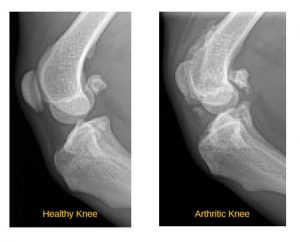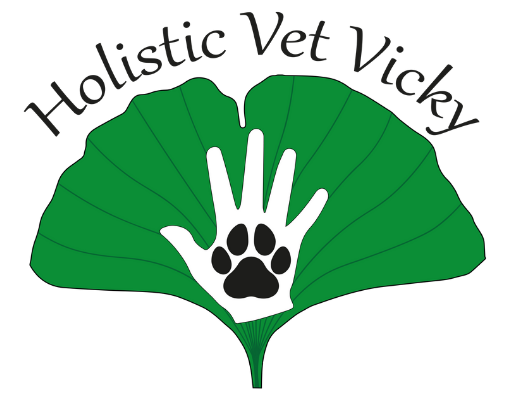ARTHRITIS - What Is It?
Arthritis is one of the most common conditions that all pet owners face, becoming increasingly common as pets get older. However, it is not exclusive to older pets. Some pets have injuries or growth deformities/issues that predispose them to early onset arthritis.
No matter the age of your pet, few people want to have their pets on long-term pain relief, as it is known that the most commonly used anti-inflammatories, Non-Steroidal Anti-Inflammatory Drugs (NSAIDs), have long-term detrimental effects on the liver and kidneys. What is less commonly known about them is that they also have detrimental effects on the cartilage within the joints. Cartilage is the smooth layer covering the surfaces of bone where they meet within the joints. If it is healthy and smooth then almost no friction, and so pain or inflammation, occurs during normal motion. If it becomes damaged, as in arthritis, then the surface roughens creating friction, pain and inflammation.

The most common form of arthritis we see is osteoarthritis, so this is what we shall discuss here. Animals can also suffer from immune-mediated or autoimmune forms of arthritis, where there is a dysfunction of the immune system so it begins to attack the patients’ own cells, in this case in the joints. Osteoarthritis is more of a ‘Wear & Tear’ disease, where the motion and weight bearing on the joints over time wears down the cartilage, creating roughening or damage as described above. Injuries, obesity, high intensity active work, competition sports, poor diet or over-exercising during growth, early neutering and growth deformities or abnormal postures can all increase the risk of arthritis.
Usually arthritis begins in one joint, often undetected at first as pets can be quite good at masking mild discomfort. However, once lameness is seen this means that some level of pain is present. This is something some people struggle to fully comprehend, thinking that although their pet is lame, they are not in pain – if your pet is limping in any way, they are suffering from some level of pain or discomfort, and the lameness is their way of protecting the affected limb. Pain has its uses if the injury is acute, as the discomfort means the animal rests the affected limb, allowing healing to occur. In arthritis, where the problem is chronic, the lameness can create a different problem.
Chronic lameness, especially of a single limb, means the other joints and muscles in the animal’s body have to compensate, often doing this by adopting a slightly different gait or posture. These new gaits and postures put pressure on muscles, tendons, ligaments and joints to move or weight bear in ways that they were not designed for. This can create strain, twisting and tension within the soft tissue structures, such as muscles and ligaments. If it is long term, then their attachments to the bones can require strengthening, which the body does by adding more bone, creating bony spurs or growths where they shouldn’t be. These bony growths and spurs are mostly found around joints. Within the joints, the problem relates more to uneven wear of cartilage, creating rough surfaces and inflammation as mentioned above. Both bone growths and bone weakening can be seen at the end of bones where they become part of a joint. All these problems increase the discomfort of the animal, and create lameness in joints that were not originally affected. The bony growths have another purpose too, and the body is actually trying to be rather clever, it just doesn’t always work in the animals’ favour. The body is trying to decrease the movement of the joint by fusing one bone to the next, preventing joint movement, and so stopping the friction, pain and inflammation. In theory this is a great plan, but in practice the fusing rarely happens, and the bone spurs create a lot of pain in the process.
The other problem that occurs with chronic lameness is muscle wastage – ‘If You Don’t Use It, You Lose It’. This is such a true statement and creates a lot of issues, especially in bilateral hindlimb problems such as hip dysplasia or bilateral cruciate ligament disease, as weakness can occur making standing and walking challenging. The more wasted a muscle becomes, the harder it is to build up again. This is why it is really important to keep your pet comfortable enough during their arthritis to keep moving, and most importantly to keep using the affected limb. Muscle wastage of one limb, always means the animal becomes more dependent on their other limbs, increasing the risk of these limbs becoming affected too. In advanced arthritic patients, where muscle wastage has occurred throughout the body, standing up, going to the toilet, going up steps, and even walking can be challenging.
Most people think of arthritis as affecting the limbs, but it is also extremely common within the neck and particularly the spine. Spinal arthritis can be harder to diagnose, as rather than lameness, you more commonly see slightly stiff movements or a stilted gait, with tension in the muscles along the spine. The spine is the only location where the fusing of one bone, in this case a vertebra, to the next, another vertebra, is actually seen relatively frequently. This condition is called Spondylosis, and although it stabilises the spine, it does this by preventing movement in that area of the spine. This increases the tension in the muscles of the spine, creating another problem!
Learn New Things. Learn Health.
Vx

Recent Comments